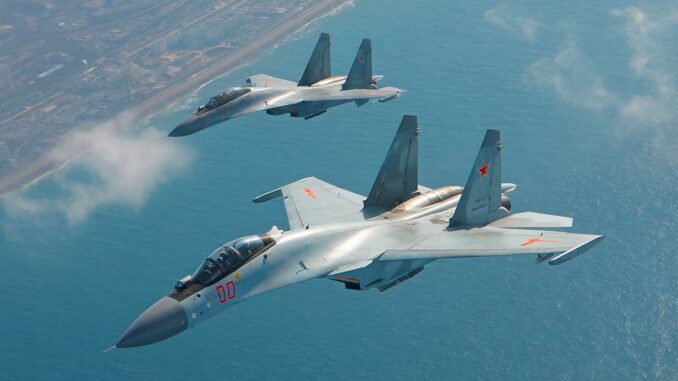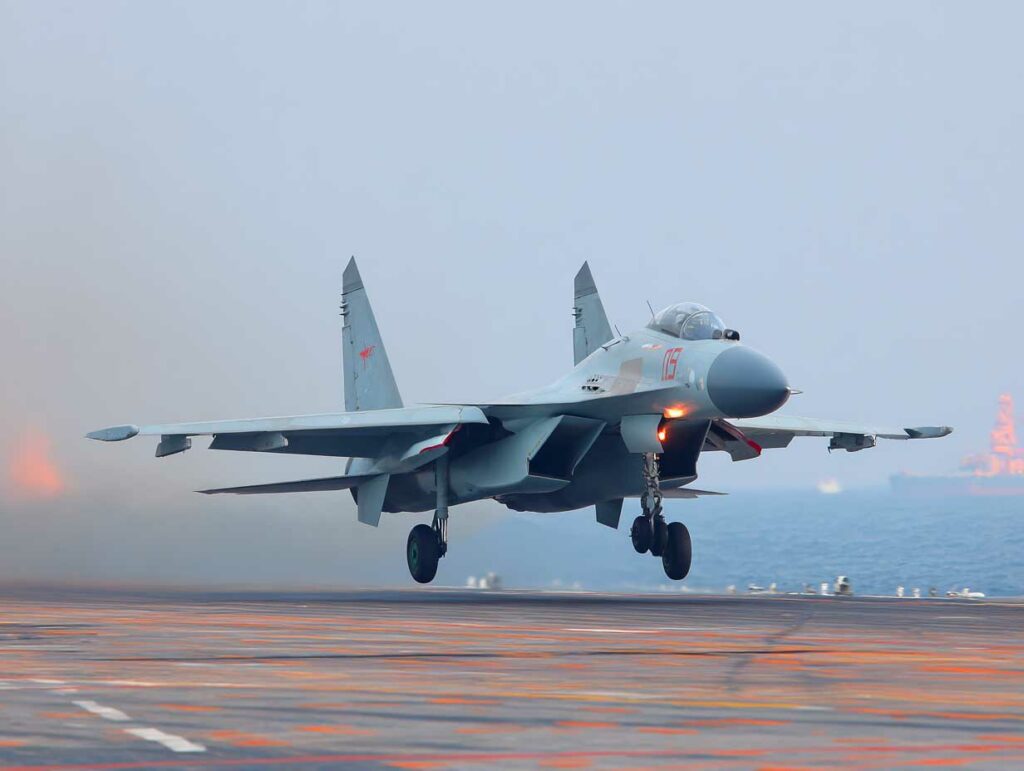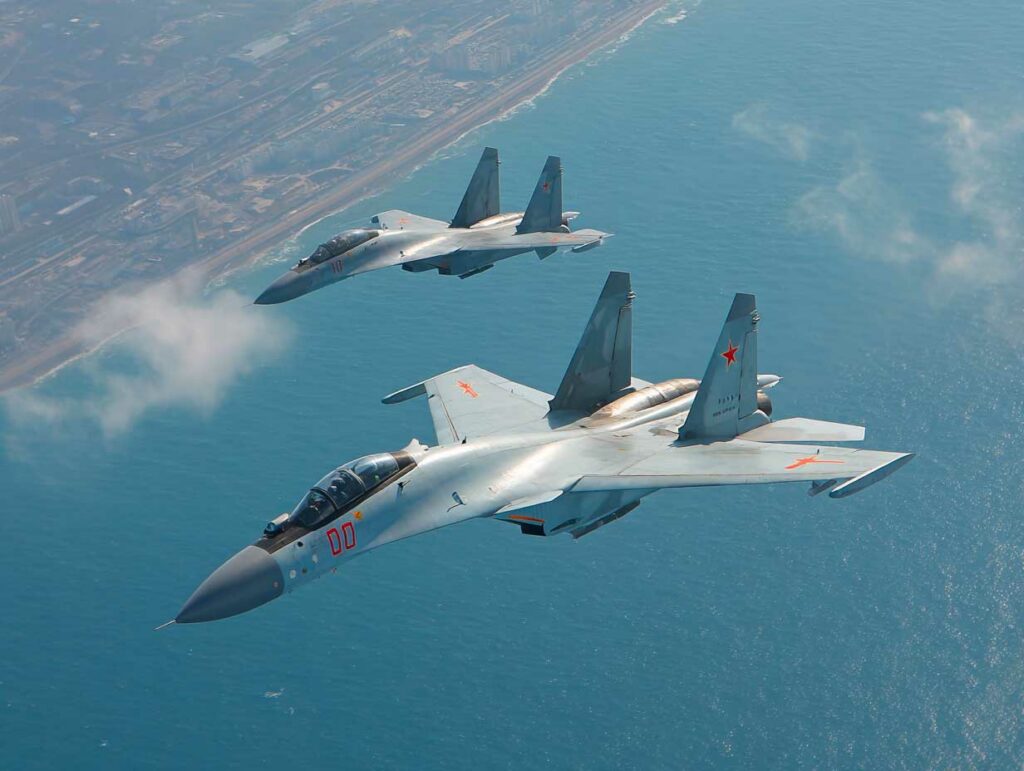
Russia and China conducted joint PLAAF–Russia exercises with J-20 and Su-35 aircraft, strengthening the strategic axis in the Indo-Pacific.
On July 23, 2025, the Chinese (PLAAF) and Russian air forces conducted joint air exercises in the Pacific. Although no official details have been released, these maneuvers most likely involved Chengdu J-20 stealth fighters and Russian Sukhoi Su-35 twin-engine jets. This operation was mentioned in public exchanges on X, in connection with intensified military collaboration between Beijing and Moscow. These exercises are intended to demonstrate a coordinated strategic posture in the face of US and Japanese presence in the Indo-Pacific region. The exercise illustrates the operational evolution of Sino-Russian military cooperation, confirmed by an increase in the frequency of joint air patrols since 2019. The growing interest in these operations lies in their tactical impact on the posture of the US Air Force and the Japanese Air Self-Defense Force, particularly in terms of regional deterrence.

The nature of joint air exercises
In a move that reflects their heightened strategic thinking, the Chinese and Russian air forces conducted joint training on July 23, 2025. Historically, Beijing and Moscow have conducted patrols over the Pacific in July 2019, December 2020, and November 2021. In November 2022, Russian Tu-95s and Chinese H-6Ks flew over the Sea of Japan and eastern China.
This time, the use of J-20 stealth fighters—fifth-generation aircraft equipped with an AESA radar with more than 2,000 modules and supercruise capability thanks to the WS-15 engine—marks a turning point. The Su-35S, a maneuverable Russian 4.5-generation aircraft equipped with thrust vector engines, has already been delivered to the PLAAF since 2016, providing tactical complementarity.
The tactical objectives are clear: advanced formation coordination, mutual interception training, electronic warfare exercises, and network interoperability simulation. These steps reinforce the growing familiarity between the two armies, already evident in sixty joint exercises between 2003 and 2021.
Geostrategic challenges for the Indo-Pacific region
These maneuvers reflect an intensification of the strategic partnership between China and Russia. Since the start of the Russian offensive in Ukraine in 2022, Beijing has supported Moscow technologically and logistically. The combined training exercises in the Pacific region illustrate a desire to move beyond the Eurasian sphere and adopt a posture of indirect confrontation with American and Japanese influence.
On an operational level, the use of J-20s—with their long-range PL-15 or PL-17 air-to-air missiles (with a range of up to 400 km or even 800 km depending on the PL-XX prototype)—changes the balance of capabilities. The Su-35, with an estimated unit cost of $65 to $84 million fully equipped, enriches air defense scenarios.
This puts direct pressure on the US Air Force and Japanese forces. The latter are forced to adjust deployments and alerts due to the Chinese-Russian ability to coordinate tactical missions with stealth aircraft and super-maneuverable aircraft in sensitive areas near the Japanese islands. The strategic signal effect deters attempts to penetrate the air identification zone.
Technical analysis of the platforms involved
The Chengdu J-20 is a twin-engine stealth fighter designed to replace the older Su-27/Su-35 fleets. It shares an AESA radar capable of tracking more than 20 targets simultaneously. Recent versions are powered by WS-10C and then WS-15 engines, capable of supercruise. According to the IISS and OSINT analysts, more than 200 to 250 J-20s were produced by the end of 2023, with an estimated production rate of more than 100 units per year. In mid-2024, the fleet is estimated at around 195 aircraft spread across twelve brigades.
The Russian Su-35S, meanwhile, is a 4.5-generation aircraft introduced in 2014, with more than 110 units in the Russian military and 24 in service with the PLAAF since 2018. This platform is valued for its extreme maneuverability thanks to its thrust vector engines, as well as its multi-mode radars and its ability to operate in contested environments.
The J-20 + Su-35 combination gives the Sino-Russian axis a mixed stealth and maneuverable capability, enabling tactical air supremacy as well as strategic projection in sensitive areas.

Impact on Japanese and US doctrines
Faced with this demonstration, Japan and the US are being forced to strengthen their wide-area radar systems, improve F-35A, F-15, and F/A-18 patrols, and even accelerate the deployment of E-7 Wedgetail aircraft. Intelligence reports already indicate that Japanese aircraft have been scrambled in response to Chinese and Russian flights.
Politically, this coordination strengthens the Sino-Russian axis, which is perceived as a counterweight to Western alliances. The US must now view this cooperation as a factor in simulated escalation: joint training positions both countries for coordinated operations even in the absence of hostilities. The effect is twofold: deterrence and preparation for a new posture of strength.
Without giving in to political correctness, these exercises can therefore be seen as a direct response to the US-Japan alliance. By increasing joint flights and tactical training, China and Russia are ensuring a credible joint strategic capability in the Indo-Pacific. For defense experts, this development comes as no surprise but confirms increasingly operational coordination, with a sophisticated mix of stealth, long-range offensive systems, and close air combat. This requires rapid adaptation of regional defense doctrines, as well as strengthening allied detection and interoperability chains.
War Wings Daily is an independant magazine.